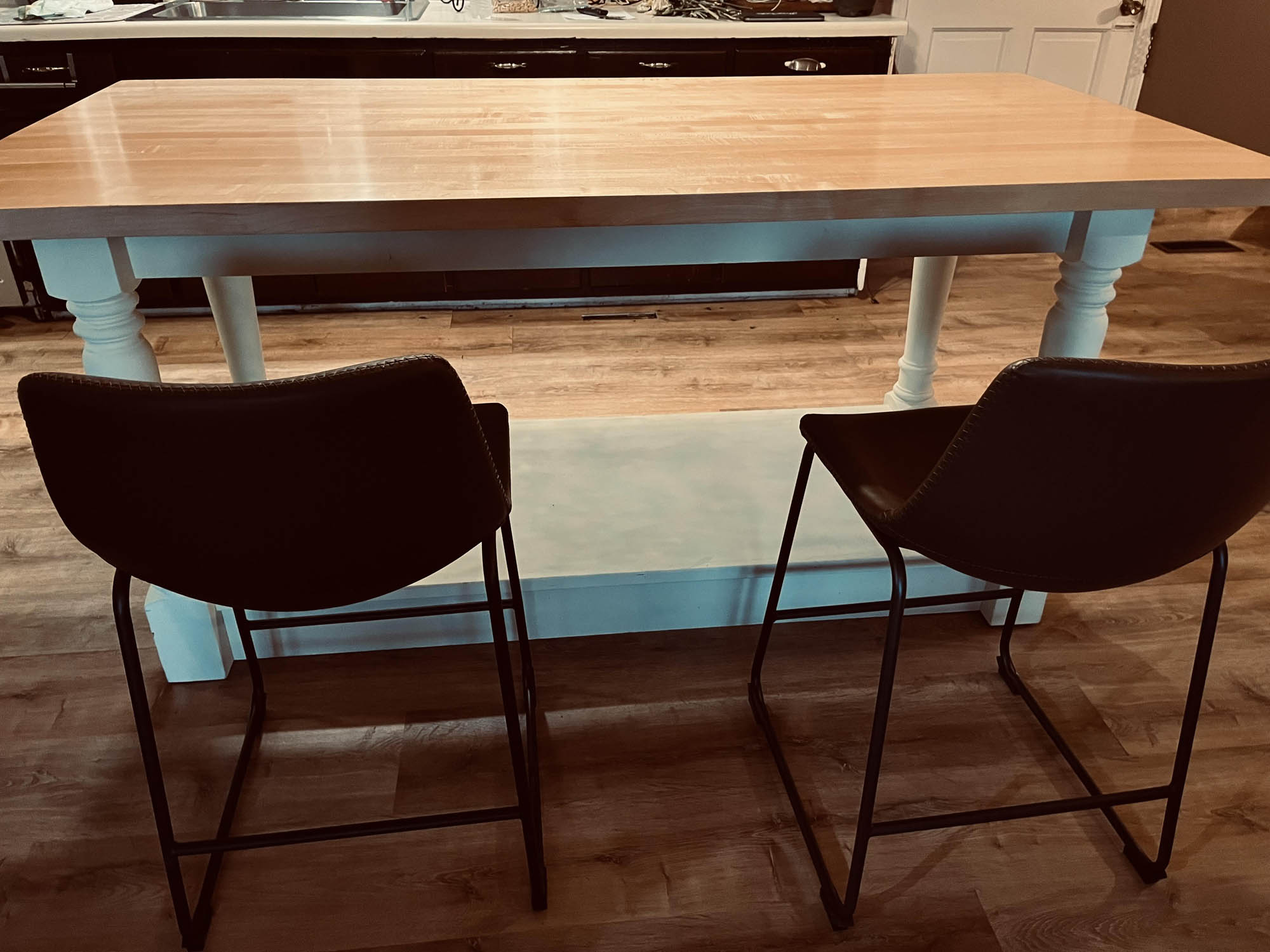Small Kitchen Island: $800.00
Small Kitchen Island with Oak and Stickley Influence would combine the warmth and durability of oak wood with the timeless design principles of the Arts and Crafts movement, particularly the focus on craftsmanship, simplicity, and function. Here’s a detailed description of what such a piece might look like:
Design Features of a Small Kitchen Island with Oak and Stickley Influence
- Material:
The island is made from solid oak, known for its strength, grain pattern, and warm color. The oak might be finished with a natural, hand-rubbed stain that brings out the wood’s grain, giving the piece a rustic yet refined look. The finish could be slightly matte, allowing the natural beauty of the wood to shine through. - Craftsmanship and Joinery:
True to Stickley’s design philosophy, the joinery on this kitchen island would feature exposed, traditional techniques such as mortise-and-tenon joints. These joints are often left visible to highlight the skill and integrity of the craftsmanship. The assembly would feel solid and well-built, emphasizing both durability and artistic precision. - Clean Lines and Simple Silhouette:
The island would have a simple, rectangular or square shape, with clean, straight lines that evoke a sense of understated elegance. There is no excess decoration; instead, the focus is on functional form and the inherent beauty of the wood. The edges of the island might be slightly rounded or beveled, providing a soft, approachable look while maintaining a sense of strength. - Legs and Base:
The island would likely feature square or slightly tapered legs, sturdy enough to support the weight of the island while giving it a grounded, substantial look. The legs could be chunky with simple, geometric details or might feature a double leg design for added visual interest and support. The base would be functional, designed for ease of use and stability. - Practical Functionality:
Stickley-inspired furniture emphasizes functional beauty, so this island would be designed not only to look beautiful but also to serve practical purposes. It could feature open shelving or drawers for additional storage, maintaining a clean aesthetic while offering convenience for kitchen tools, utensils, or other items. The storage might be subtly integrated into the design to keep the focus on the wood and craftsmanship.
Work Surface:
The top of the kitchen island would likely have a wide, flat surface that serves as a prep area, eating space, or additional storage for kitchen essentials. The oak’s grain would be subtly emphasized, making the work surface both functional and visually appealing. The finish would be durable to withstand daily use, with a slightly matte sheen to avoid high-gloss or overly polished looks.
Incorporating Stickley Influence:
A key feature of Stickley influence is minimalism with purpose. The design would avoid ornate carvings or unnecessary embellishments. Instead, the island would be efficient, serving multiple purposes in a kitchen without compromising on the beauty of natural materials. Its simple yet sturdy design would fit seamlessly into a variety of kitchen styles, from traditional to more modern, while still evoking the timeless principles of the Arts and Crafts movement.
Overall Aesthetic
A small kitchen island with Stickley influence brings together a rustic, functional design with elegant simplicity. The oak material, exposed craftsmanship, and practical storage solutions reflect a piece that is not only a centerpiece in the kitchen but also a highly functional and enduring addition to the home.

